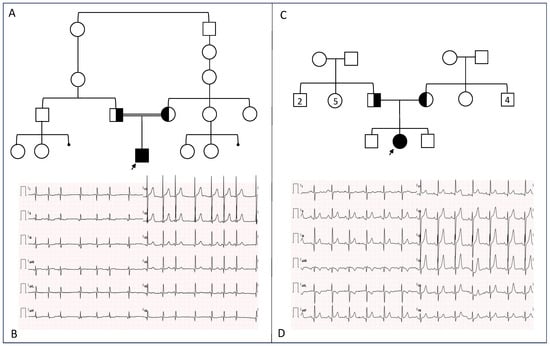Genes, Vol. 16, Pages 62: Expanding the Molecular Spectrum of MMP21 Missense Variants: Clinical Insights and Literature Review
Genes doi: 10.3390/genes16010062
Authors:
Domizia Pasquetti
Paola Tesolin
Federica Perino
Stefania Zampieri
Marco Bobbo
Thomas Caiffa
Beatrice Spedicati
Giorgia Girotto
Background/Objectives: The failure of physiological left-right (LR) patterning, a critical embryological process responsible for establishing the asymmetric positioning of internal organs, leads to a spectrum of congenital abnormalities characterized by laterality defects, collectively known as “heterotaxy”. MMP21 biallelic variants have recently been associated with heterotaxy syndrome and congenital heart defects (CHD). However, the genotype–phenotype correlations and the underlying pathogenic mechanisms remain poorly understood. Methods: Patients harboring biallelic MMP21 missense variants who underwent diagnostic genetic testing for CHD or heterotaxy were recruited at the Institute for Maternal and Child Health—I.R.C.C.S. “Burlo Garofolo”. Additionally, a literature review on MMP21 missense variants was conducted, and clinical data from reported patients, along with molecular data from in silico and modeling tools, were collected. Results: A total of 18 MMP21 missense variants were reported in 26 patients, with the majority exhibiting CHD (94%) and variable extra-cardiac manifestations (64%). In our cohort, through Whole-Exome Sequencing (WES) analysis, the missense p.(Met301Ile) variant was identified in two unrelated patients, who both presented with heterotaxy syndrome. Conclusions: Our comprehensive analysis of MMP21 missense variants supports the pathogenic role of the p.(Met301Ile) variant and provides significant insights into the disease pathogenesis. Specifically, missense variants are distributed throughout the gene without clustering in specific regions, and phenotype comparisons between patients carrying missense variants in compound heterozygosity or homozygosity do not reveal significant differences. These findings may suggest a potential loss-of-function mechanism for MMP21 missense variants, especially those located in the catalytic domain, and highlight their critical role in the pathogenesis of heterotaxy syndrome.
Source link
Domizia Pasquetti www.mdpi.com

